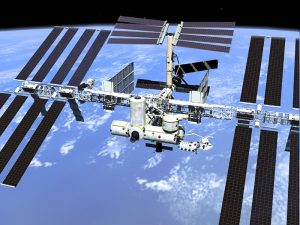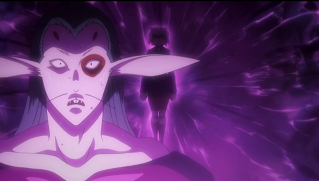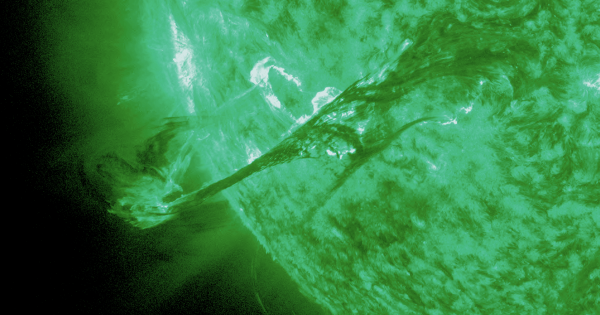 I was watching the TV commercial featuring the Space Shuttle Endeavor the other night – you know, the one where a truck tows the Shuttle through the streets of Los Angeles to its permanent exhibit hall. It struck me how terribly undignified that final voyage was for Endeavor, and for the Space Shuttle Program itself. I started working on Shuttle in 1972 during the pre-design phase and stayed with it through the first six flights until 1984. It feels like Space Shuttle had a working career as long as mine.
I was watching the TV commercial featuring the Space Shuttle Endeavor the other night – you know, the one where a truck tows the Shuttle through the streets of Los Angeles to its permanent exhibit hall. It struck me how terribly undignified that final voyage was for Endeavor, and for the Space Shuttle Program itself. I started working on Shuttle in 1972 during the pre-design phase and stayed with it through the first six flights until 1984. It feels like Space Shuttle had a working career as long as mine.
Three years ago I got up early to watch Endeavor’s penultimate flight, a pre-dawn launch that was spectacular. Now she and all the rest of the fleet are retired. It’s hard to believe the Shuttles took us into space for almost 30 years. I remember reading Ray Bradbury’s “R is for Rocket” as a kid and imagining what it would be like to watch a real rocket ship take off. Since then I’ve had the opportunity to view several of them in person, including an amazing night launch at Cape Canaveral, which was eerily like an SF movie, with the rocket’s flames backlighting some low-hanging clouds as it passed behind them in the darkness.
On that morning in February 2010, Shuttle Endeavor’s mission was to deliver a module named Tranquility (to commemorate the first Apollo lunar landing site) to the International Space Station. The Tranquility module is fifteen feet wide and almost two stories long, the size of a large living room. It contains an environmental support system, a gym with a treadmill and fitness trainer, an extra bathroom (can’t have too many of those, I guess), and a large cupola on one end with seven clustered windows.
The cupola, which was built in Italy, gave astronauts (and later us) a first-ever panoramic view of space. The vantage allows astronauts the visibility needed to work the remote manipulator arms outside, but the real excitement was over the unprecedented views this new “picture window” provides of the vast and empty space surrounding the Station, and of the Earth from orbit. The sights are quite stunning.
The first Space Station module was carried into orbit in 1998, and since then fourteen Space Shuttle launches and four Russian spacecraft have carried up a total of fifteen pressurized sections, with another one scheduled for 2014 (components built by the U.S., Canada, Europe, Japan, Brazil, and Russia). Astronauts have spent more than 1000 hours in spacewalks assembling the Space Station, like a giant orbiting Erector Set.
The crew’s total living and working quarters are now as long as a football field and as roomy as a five-bedroom house (with two bathrooms, a gymnasium and a 360-degree bay window thanks to Tranquility). If you’ve watched the movie “Apollo 13” you can see that’s quite a change from the cramped old days of spaceflight. The Station orbits about 250 miles above the earth and makes a complete revolution every 90 minutes. NASA’s website lets you figure out the times when Station will be visible in your own sky. I’ve watched it pass over our house twice, moving from west to east like a bright star under sail. Station was designed to have up to six permanent crew members, doing research on biological, physical and space sciences. Since November 2, 2000 it has never been vacant.
The focus of United States research is to determine the long term effects of space travel on humans, a must if we are to go back to the Moon and on to the planets. Although Space Shuttle’s time is at an end, the Station will continue operations until at least 2020. NASA’s plan is to transport astronauts and supplies to Station via Russian launch vehicles (which are currently being used) while providing incentives to private industry to carry out the mission in for longer term. One privately held company, SpaceX, headquartered in Hawthorne, California, has already launched two unmanned spacecraft that made successful cargo deliveries to the Station. A number of other companies are working away too, including Virgin Galactic, founded by Virgin Atlantic’s Sir Richard Branson
The National Air and Space Museum in Washington has a 3D IMAX film about Space Station, which is the next best thing to actually being on board. If you haven’t seen it, I recommend you do if you get the chance; it’s dazzling. You can also watch videos from the Space Station on NASA’s Space Station website and on NASA’s YouTube site.
With conflicts in the world making the evening news, sometimes it’s encouraging to see a truly international adventure like Space Station working so beautifully.
As one author once said, the nice thing about science fiction is that it assumes we will have a future. For me, the International Space Station does that too.












